Volleyball drills for technique passing / defense / reception
2-pairs:
- throw up 2 hands
- throw over 1 hand left and right alternately
- throw over with bounce
- smash with bounce
- smash with bounce, do not catch but play OH once
- OH pass, pay attention to position
- OH pass, touch ground, stay low
- one player throws on, other plays OH back, after playing touch pawn and return low
- One player touches hard
- OH overplay after player plays the ball, touch pawn, return low
Exercise to pass underhand and/or overhand.
- The set-upper throws the ball high enough for the attacker.
- Use a korfball basket for this purpose.
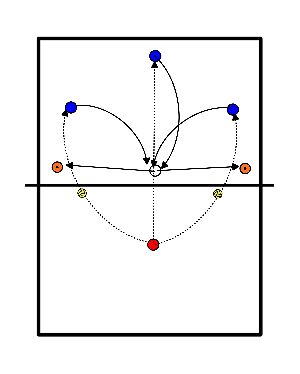
- 2 pass to the same side and attack.
- Focus on the pass.
- When the pass is given, leave with your run-up.
- Exercise can also be adapted with explanation false pass:
- always run up but the pass goes backwards to the other player. Opponents rotate their position and stand completely wrong as a result.
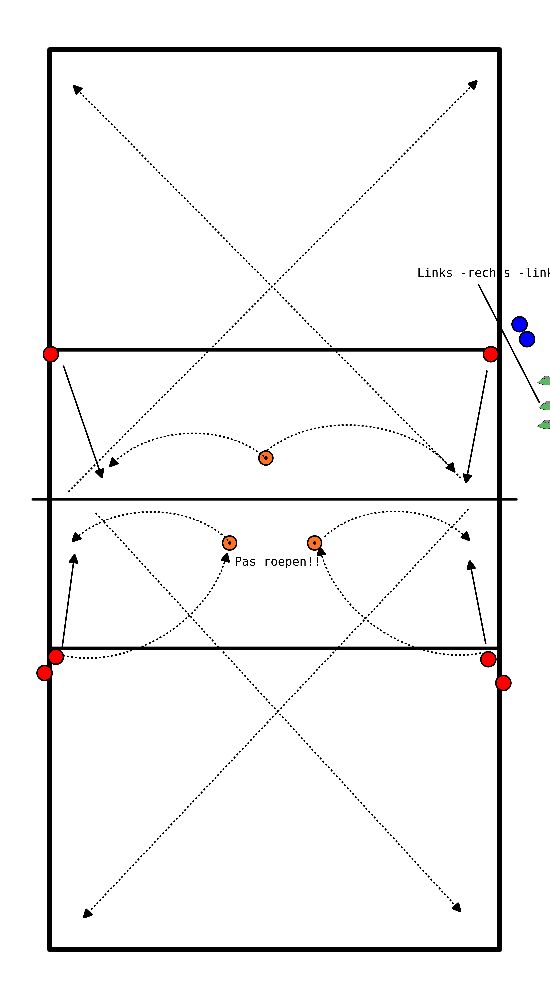
- Each side of the field 1 pass
- Players throw in trap from 2 to 6
- 6 passes to 3
- Pass into basket
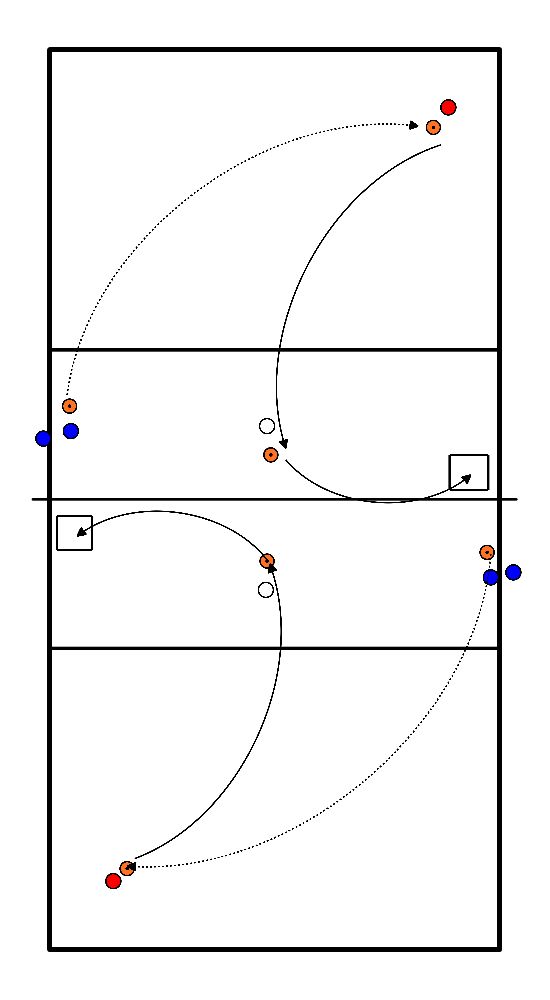
Make pairs.
Two pawns per pair.
Two pawns per pair.
- One throws the ball and the other passes.
- When passing, make sure the ball can be caught overhead.
- Throw the ball left and then right.
- Increase the pace during the exercise.
- Scramble to practice understanding.
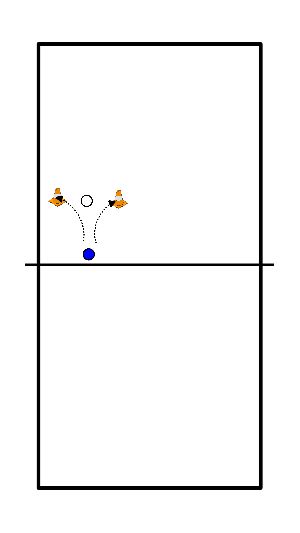
- Serve from position 1 diagonally to position 1.
- There is a passer who passes to a playmaker, if he catches the ball within 2 steps you get 1 point.
- Faulty service is point off.
- Which team reaches the 15 first, if this takes too long you can lower it.
- In this exercise taking turns serving is recommended.
- Server becomes passer, passer becomes catcher, catcher becomes server. rotate on own side.
- If possible reserve server, then reserve passers.
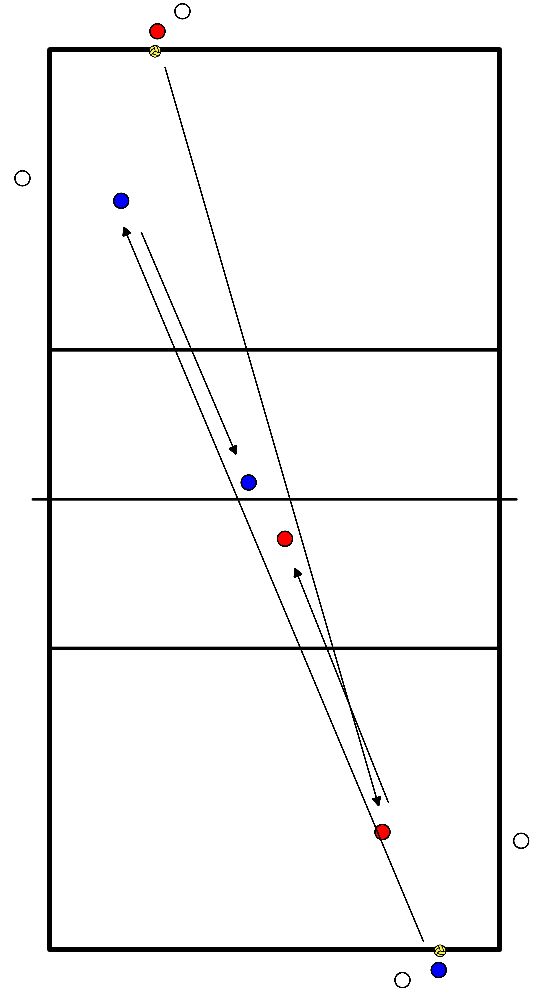
- On one side are a playmaker and a passer on the front left or right.
- On the other side of the net stands someone who hits, this person calmly hits the ball toward the passer.
- The passer passes to the playmaker.
- The playmaker gives a set up on the passer who has passed.
- The attacker/passer retrieves his own ball and becomes a thrower.
- The thrower becomes passer.
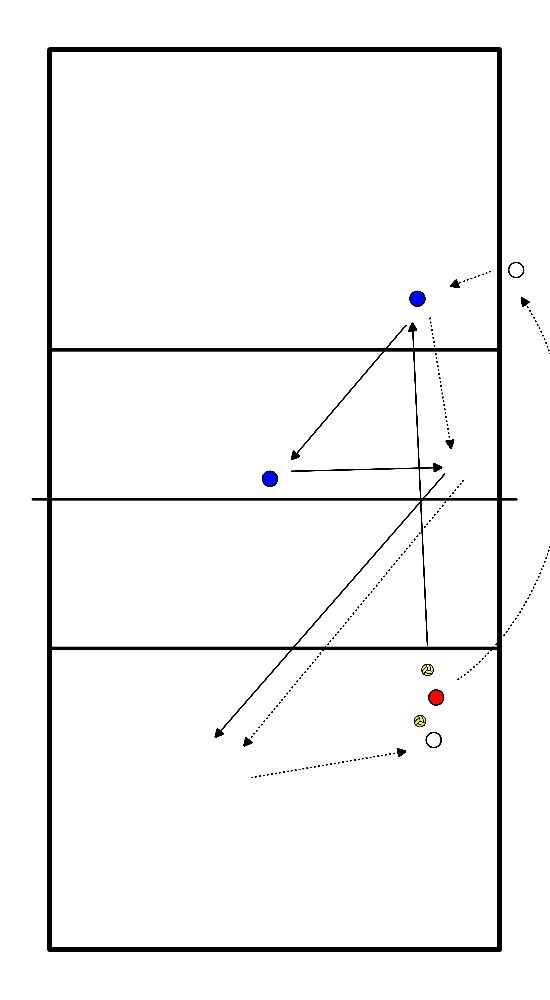
- Serve from position 1 to position 5.
- There is a passer who passes to a playmaker, if he catches the ball within 2 steps, you get 1 point.
- Faulty service is point off.
- Which team gets to the 15 first, if this takes too long, you can reduce the number.
- Server becomes passer, passer becomes catcher, catcher becomes server. passing on own side.
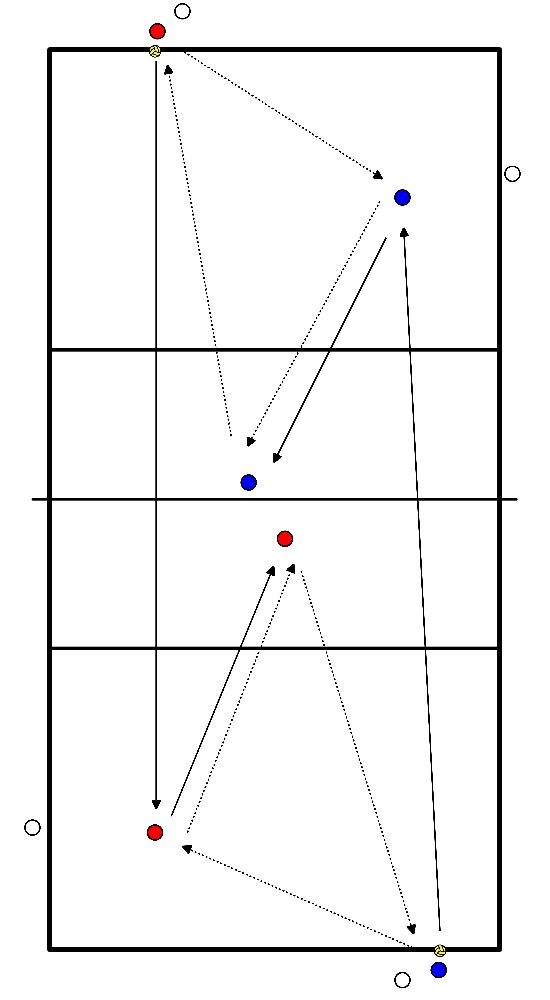
- Playing the ball with overhand technique when the ball reaches this height.
- Giving the ball sufficient height.
- Playmaker may catch the ball.
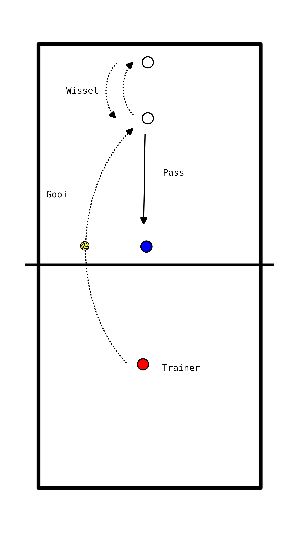
Exercise to learn to play with straight arms on the underhand pass.
A common mistake is for the passer to play the ball with bent arms so that it goes backwards.
A common mistake is for the passer to play the ball with bent arms so that it goes backwards.
- Focus on stretching the arms while passing
- Practice playing the ball with sufficient height
- Repeat the exercise regularly to improve technique
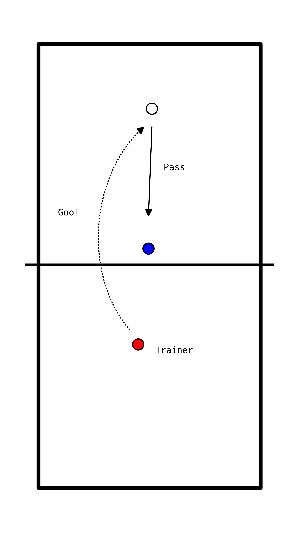
Positions:
- Trainer at mid forward, to throw to, but do keep space to net so player can pass behind.
- 1 Player without ball on Setter spot = 1st catcher.
- Player is the passer who will pass 10 good balls
- Other players with ball next to trainer for passing and catching
- The exercise runs best with about 5-6 players.
Organization:
- Passer is given balls successively thrown at:
- P1, P6, P5, P4, P2 regardless of whether the ball is good => through to next position.
- Then balls at random position, trainer determines difficulty, until there have been 5 good passes.
- After 5th good pass => Player quickly to P6, ready on front feet.
- Last pass comes from P6 , on a 'beaten' ball.
- Continue until there is a 6th good pass.
Other player:
- Always give ball to trainer and straight to setter spot to catch off.
- Ball not good, quickly retrieve and join the line.
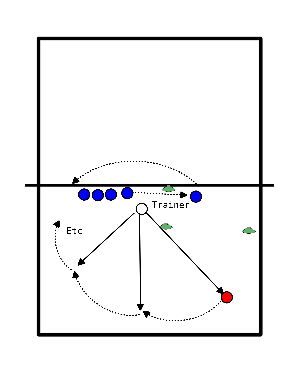
- All players have a ball.
- Divide the group into two - maximum 4 to 5 players per group.
- Near the net is the ball pit.
Exercise per group:
- Play up overhead in front of yourself and keep playing.
- Slowly move towards the net, keep playing up.
- Overhand: Play up high, quickly get under the ball, stand still and then play.
- At the net: => play the ball IN the ball pit. The distance does not matter.
- Ball on the ground => start again from the back line.
Same exercise can be done with underhand play up to the net + play IN the ball box.
For the better players there can be a third round:
- Ball bin on the back line of the other field, players must now pass the net. Play over it, themselves under it. Underhand or overhead no longer matters, as long as the back line is crossed.








